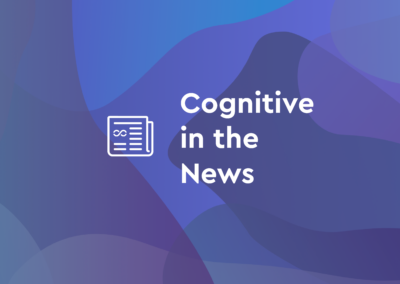Resources

The Top Reasons Seniors Want to Age In Place
Aging in place is quickly becoming the dominant preference among older adults, with over 75% of people aged 50 and older expressing a desire to remain in their homes rather than move to assisted living or nursing facilities. For many, staying home represents...
The Top Reasons Seniors Want to Age In Place
As more older adults express a strong desire to remain in their homes, aging in place is redefining the future of eldercare. This blog explores why independence, emotional well-being, and cost-effectiveness are driving this shift—and what healthtech and care providers must do to support it through flexible, personalized solutions.
Filter by topic

The Opportunity of Too Much Data
As the smart home industry grows, managing fragmented data from various devices has become a major challenge. The future of smart homes lies in turning this data into actionable insights, using AI and Wi-Fi Sensing technology to create intuitive, adaptive environments. Cognitive Systems is at the forefront of this transformation, leveraging WiFi Motion™ technology to improve security, energy efficiency, and health monitoring—all while simplifying the smart home experience.

CareAware Wins Best Wi-Fi for Social Impact Award – 2024 WBA Industry Awards
Cognitive is thrilled to announce that CareAware, our innovative Wi-Fi Sensing solution developed in partnership with Electronic Caregiver, has won Best Wi-Fi for Social Impact Award at the 2024 Wireless Broadband Alliance (WBA) Industry Awards. CareAware uses wireless signals to monitor movement and presence within the home, allowing caregivers to track seniors' activity, sleep patterns, and overall well-being in real-time, all without the need for wearable devices.

Meet the Cognitive Team: Dr. Taj Manku, CEO & Co-Founder | Part 1
In this video, Dr. Taj Manku, the CEO and Co-Founder of Cognitive Systems, shares his extensive experience in the wireless industry and discusses the innovative technology behind Cognitive's solutions. With over 20 years of expertise in interpreting wireless signals, Dr. Manku explains how this technology can enhance our understanding of everyday activities in our homes. He highlights the application of WiFi Motion technology, particularly in monitoring the well-being of loved ones, such as elderly family members.

The Three Pillars of WiFi Motion Insights
This blog explores how WiFi Motion™ leverages advanced algorithms and machine learning to provide real-time, historical, and event-based motion detection insights through Wi-Fi Sensing. It highlights how each motion type—live for immediate action, historical for trend analysis, and event-based for critical alerts—contributes to a comprehensive understanding of movement in various environments. By integrating these data types, Wi-Fi Sensing systems offer users enhanced security, energy efficiency, and peace of mind, while enabling developers to create more responsive, customizable applications that reduce false alarms and improve overall user experience.

Optimizing Wi-Fi Sensing UI for Better User Experience
This blog explores key factors for successfully adopting Wi-Fi Sensing technology, based on Cognitive Systems' experience with solutions like HomeCare and Caregiver Aware. It emphasizes the importance of a smooth setup, efficient motion monitoring, clear data visualization, and user-friendly design. By focusing on ease of use and customer satisfaction, Cognitive Systems shows how thoughtful design ensures Wi-Fi Sensing’s real-world success.

How Will Wi-Fi Sensing Reach Mass Adoption?
Part 3 of our 802.11bf series highlights the importance of interoperability and industry adoption for Wi-Fi Sensing's success. Seamless communication between devices from different manufacturers is key to creating a unified ecosystem and driving growth. As vendors gradually implement 802.11bf features, sensing capabilities and Wi-Fi reliability will improve. The blog also stresses the need for strategic partnerships, education, and innovation to overcome challenges and unlock the full potential of this transformative technology.

What Role Do Wi-Fi Mesh Networks Play in a Standardized Future?
This blog, co-authored by Chris Beg, Cognitive’s Wireless Systems Architect, delves into the pivotal role of Wi-Fi mesh networks in the future of standardized wireless technology, particularly in the context of the emerging 802.11bf standard. It highlights how mesh networks enhance Wi-Fi Sensing capabilities, offering improved coverage, reliability, and device compatibility. The blog also discusses the integration of Wi-Fi CERTIFIED EasyMesh®, which addresses vendor compatibility challenges and supports the seamless adoption of advanced sensing features, ultimately positioning mesh networks as a key enabler in the evolution of Wi-Fi connectivity.

How Does 802.11bf Enhance Legacy Sensing?
As we approach the final approval of this groundbreaking amendment in 2025, it's crucial to understand how 802.11bf is set to revolutionize wireless communication by seamlessly integrating motion sensing capabilities into existing Wi-Fi networks. The first part of this three-part blog series focuses on how the 802.11bf standard enhances legacy Wi-Fi sensing capabilities. It explains how the standard, without requiring major hardware changes, introduces flexible and robust sensing features that can be integrated into existing Wi-Fi networks. By leveraging current Wi-Fi components and maintaining compatibility with legacy devices, 802.11bf ensures a smooth transition to advanced sensing applications, enabling more reliable and consistent measurements while avoiding costly upgrades.

Meet the Cognitive Team: Bob El-Hawary, EVP Sales
Revolutionizing Wi-Fi technology requires a dedicated team to push boundaries. As our Wi-Fi Sensing technology, WiFi Motion expands globally, we’d like to introduce you to one of the many faces at Cognitive making this possible: our EVP Sales, Bob El-Hawary. From measuring success to building trust Bob discusses his role at Cognitive and how he helps WiFi Motion reach its full potential.
